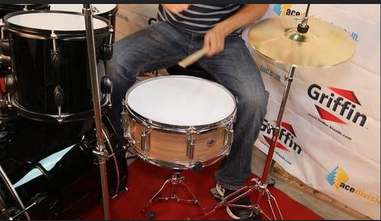Picking the Proper Snare Drum
As you put your drum kit together, you will surely want to put in a snare drum to your mix. Also called a side drum, this flexible tool delivers a vast assortment of sounds. From the typical wire-enhanced snare sound, to the time-honored rim shot. Let's take a look at this integral instrument and how various factors affect its sound and durability. Our goal is to help you select the right snare drum to your style.

Pick the Size to the Sound You Want
The thickness of the drum affects the thickness of the sound. All are 5 to 6 inches deep, although some go as deep as 8 inches, with a corresponding thickness of noise. Conventional snare drums are 5 inches deep using a 14 inch diameter, and are the mainstay dimensions for jazz, country, and rock drummers. All these are featured on the kits of these playing metal/heavy metal and funk.
Likewise for diameter. A smaller diameter drum will get a higher pitch than a larger diameter mind. Again, it's something you have to hear for yourself to see whether it's a sound you want. The combination of casing diameter and depth makes its sonic footprint.
Deep snares are sometimes used as choices on stone kits, or on drum and bass set ups. Piccolo snare drums are typically only 3 inches deep with a 13 inch diameter, and that retains the sound crisper with a high pitch. Piccolos are inclined to be prominent on the kits of drummers playing pop, reggae, jazz and hip-hop. A lighter, brighter sound is achieved, and the piccolo is often utilized as another or other snare on the kit.
What It Is Made from Determines What it's Made For
Snare drums create various sounds based on the materials they're composed of. Jazz snare drums are typically made from brass or wood, with walnut being the overriding material. This gives the drum a rich, deep sound. Rockers like snare drums made from stainless steel which different and louder sound makes it noticed against electric guitar riffs. Metal drummers and punk rockers such as a snare drum which makes a lot of sound at higher pitch. Plus it must handle some fairly heavy actions. Their snare drums usually include materials such as aluminum, bronze, brass, or synthetics like carbon dioxide or acrylic.
The Difference the Head Makes
The drumhead that the drummer strikes will considerably influence the sound. Funk drummers like a tightly tuned head made of durable material that will deliver immediate, full-bodied sound. Those favoring punk seem to favor a tighter setup that produces crisper action and sound. Jazz drummers usually groom their snares using a textured drumhead that improves the nuanced, muffled noise they desire. And rockers need a slightly muffled sound rippling through a heavy drumhead. For them, the right drum head gives the trap more"thump" and less"crack."
More closely tuned heads will prove less durable, irrespective of material. However, the distinction is not so good you ought to let it impact your set up. Tune the mind to your style, and let it rip. Most heads will give you a decent return on your investment.
Conclusion
As you set your place together, or pick a snare drum for an existing set, think about your needs and style. Then select the best snare drum which will deliver the sound you are searching for.
For more details please visit snare drum.
Created at 2020-08-28 19:48
Back to posts
This post has no comments - be the first one!
UNDER MAINTENANCE